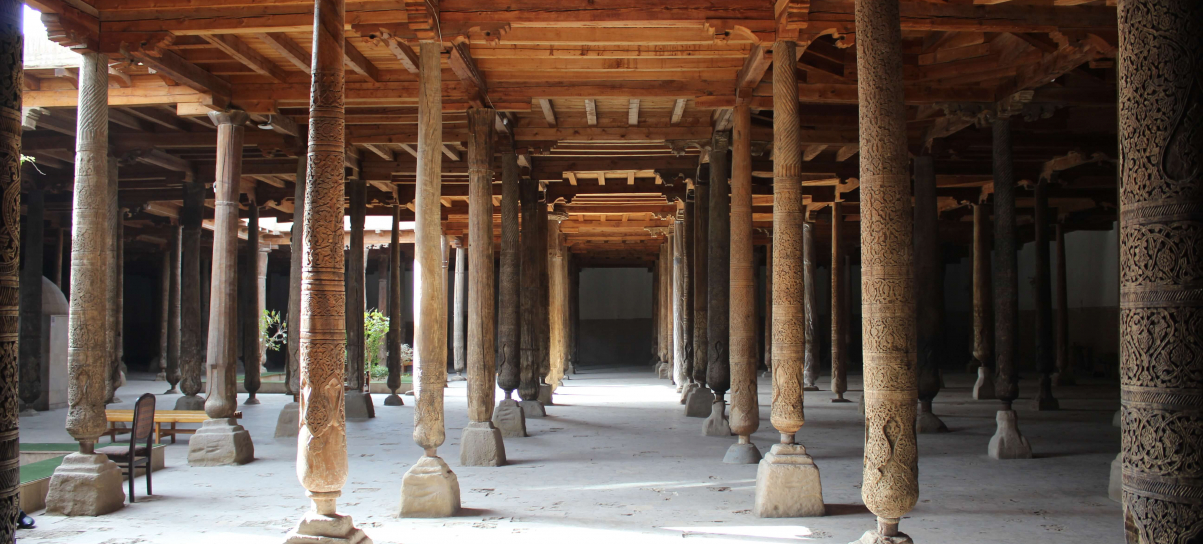Magic Khiva
This Museum in the Open Air, City of 1001 Nights and magestic capital of Khans of Khorezm, is situated in lower streams of Amudarya River – the ancient Oxus. The local legend says that the city was founded by Shem, son of Prophet Noah. The Kheivak well, supposedly dug by Shem, is still can be found in the city.
The city is located in the Khorezm Oasis between the greatest deserts of Karakum and Kyzylkum, in a thin stripe of fertile land which runs along the river. The archeological excavations revealed the most ancient cultural layers dating back to antique period and some historians state that Khiva is 2500 years old. The earliest dynasty of Khorezm is known as Afrigids and their rule lasted from 4th till 10th centuries and the capital was situated on the opposite banks of Amudarya River. Khiva started developing rapidly only on 7th century AD as a trade city , when Sassanids Kings of Iran closed down the trade routes for Sogdian caravans and merchants had to find the new routes.
Many times ancient lands of Khorezm were devastated by invaders. In the 6th century BC it was part of Akhemenid Empire. In the 8th century AD it was conquered by Arab Army of Kutaiba, who was very ruthless to local population, especially Zoroastrian priests.
|
|
But the worst impact was done by Mongol Hordes in the 13th century, when Khiva was burnt to ashes.
Khiva revived only when it became the capital of Khorezm oasis in 1597 AD when Amudarya River shifted its course and the the previous capital Gurganj was abandoned by population.
In 16th century Khiva was ruled by Khans of Shaybanid Dynasty.
It was the beginning of development of Khiva. For nearly 400 years the construction activity did not stop in Khiva. All the later Khans contributed to architecture of the city by building palaces, madrasahs, caravan sarays and etc., all richly decorated with tile work, mainly majolica. The shortage of living space in protected city with big population, forced Khivans be practical and to construct the new buildings on top or on foundations of old structures. That’s why majority of historical monument which one can see in Khiva during Uzbekistan Tours, dates back to 18th-19th centuries, and mainly built by Khans of Kongrad dynasty. In the 19th century city expanded and there were built outer walls and Khiva consisted now of two parts: Ichan Kala (Inner Town) and Dishan Kala (Outer Town).Also the harsh climate with hot summers and breezy winters reflected in the style of the urban architecture.
 |
In 1873 Khiva Khanate was conquered by Russian Empire and had to give away half of its territory to Russians.
In 1918 the last Khan of Khiva - Asfandiyar was killed by Turkmens and in 1920 Khiva was declared a capital of Khorezm Peoples Republic and from 1924 till 1991 it was part of Soviet Uzbekistan.
Nowadays Khiva is part of World Heritage List of UNESCO and people travel from all around world to see Khiva in Uzbekistan Tour.
Khiva Hotels
Khiva Sightseeings
We recommend to see more:
Follow us on
Sign up for our newsletters
Find our latest discounted tours, updated itineraries and latest news about the region




